Acclaim for Alain de Bottons
The Architecture of Happiness A perceptive, thoughtful, original, and richly illustrated exercise in the dramatic personification of buildings of all sorts. The New York Review of Books Heartfelt graceful. [De Botton has] quiet intelligence, passionate conviction and the charm of a personality lightly tinged with melancholy. The Washington Post Book World De Botton has a marvelous knack for coming at weighty subjects from entertainingly eccentric angles. The Seattle Times De Botton is a lively guide, and his eclectic choices of buildings and locations evince his conclusion, that we should be as unintimidated by architectural mediocrity as we are by unjust laws. The New Yorker Erudite and readable. As much a psychological investigation as an aesthetic one, plumbing the emotional content of buildings. San Francisco Chronicle [A] lively, philosophical and joyful book. It works on a reader like the tuneup of a piano, realigning the mind and eye to pay attention to our built environments. The Plain Dealer Ingenious. De Botton analyzes the psychological, biological, and historical idioms that enable boxes of wood, stone, brick, and mortar to come alive and address our deepest spiritual concerns. De Botton is a graceful and engaging essayist, miraculously combining both levity and profundity. Entertainment Today An interesting and perhaps important addition to the debate over the emotional effect that our cities and buildings have on us. The Architecture of Happiness rightly tells us to trust our senses and personal experience. The Wall Street Journal The elegant clarity and brisk humour of his style, accompanied by pages of photos, opens your eyes to the rich possibility of thinking about your home, and your city, in a new way. The Toronto Star Singlehandedly, de Botton has taken philosophy back to its simplest and most important purpose: helping us live our lives. The Independent (London) De Botton wants to encourage his readers, and societies more generally, to pay more attention to the psychological consequences of design in architecture: that architecture should not be treated as an arcane and specialist discipline to be left to professionals, but as something that affects all our lives, our happiness and our well-being. The Observer (London)
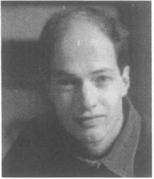
Alain de Botton
The Architecture of Happiness Alain de Botton is the author of three works of fiction and five of nonfiction, including How Proust Can Change Your Life, The Consolations of Philosophy , and The Art of Travel . He is a founding member of The School of Life: www.theschooloflife.com . He lives in London.

Also by Alain de Botton On Love The Romantic Movement Kiss & Tell How Proust Can Change Your Life The Consolations of Philosophy The Art of Travel Status Anxiety
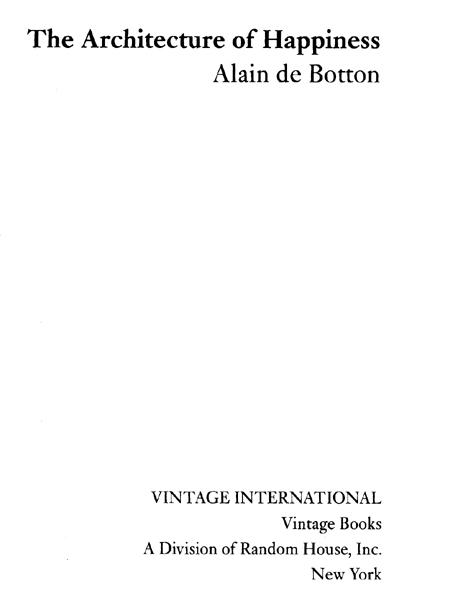
FIRST VINTAGE INTERNATIONAL EDITION, APRIL 2008
Copyright 2006 by Alain de Botton
All rights reserved. Published in the United States by Vintage Books, a division of Random House, Inc., New York. Originally published in hardcover in Great Britain by Hamish Hamilton, London, and subsequently published in hardcover in the United States by Pantheon Books, a division of Random House, Inc., New York, in 2006.
Vintage is a registered trademark and Vintage International and colophon are trademarks of Random House, Inc.
The Library of Congress has cataloged the Pantheon edition as follows:
De Botton, Alain.
The architecture of happiness / Alain de Botton.
p. cm.
1. ArchitecturePsychological aspects. 2. Architecture and
society. 3. ArchitectureAesthetics. I. Title.
NA2540.D34 2006
720.13dc22
2006044797
eISBN: 978-0-307-48156-6
Author photograph Roderick Field
www.vintagebooks.com
v3.1
for Charlotte Contents
I. The Significance of Architecture

A terraced house on a tree-lined street. Earlier today, the house rang with the sound of childrens cries and adult voices, but since the last occupant took off (with her satchel) a few hours ago, it has been left to sample the morning by itself. The sun has risen over the gables of the buildings opposite and now washes through the ground-floor windows, painting the interior walls a buttery yellow and warming the grainy-red brick faade. Within shafts of sunlight, platelets of dust move as if in obedience to the rhythms of a silent waltz. From the hallway, the low murmur of accelerating traffic can be detected a few blocks away. Occasionally, the letter-box opens with a rasp to admit a plaintive leaflet.
The house gives signs of enjoying the emptiness. It is rearranging itself after the night, clearing its pipes and cracking its joints. This dignified and seasoned creature, with its coppery veins and wooden feet nestled in a bed of clay, has endured much: balls bounced against its garden flanks, doors slammed in rage, headstands attempted along its corridors, the weight and sighs of electrical equipment and the probings of inexperienced plumbers into its innards. A family of four shelters in it, joined by a colony of ants around the foundations and, in spring time, by broods of robins in the chimney stack. It also lends a shoulder to a frail (or just indolent) sweet-pea which leans against the garden wall, indulging the peripatetic courtship of a circle of bees.
The house has grown into a knowledgeable witness. It has been party to early seductions, it has watched homework being written, it has observed swaddled babies freshly arrived from hospital, it has been surprised in the middle of the night by whispered conferences in the kitchen. It has experienced winter evenings when its windows were as cold as bags of frozen peas and midsummer dusks when its brick walls held the warmth of newly baked bread.
It has provided not only physical but also psychological sanctuary. It has been a guardian of identity. Over the years, its owners have returned from periods away and, on looking around them, remembered who they were. The flagstones on the ground floor speak of serenity and aged grace, while the regularity of the kitchen cabinets offers a model of unintimidating order and discipline. The dining table, with its waxy tablecloth printed with large buttercups, suggests a burst of playfulness which is thrown into relief by a sterner concrete wall nearby. Along the stairs, small still-lives of eggs and lemons draw attention to the intricacy and beauty of everyday things. On a ledge beneath a window, a glass jar of cornflowers helps to resist the pull towards dejection. On the upper floor, a narrow empty room allows space for restorative thoughts to hatch, its skylight giving out onto impatient clouds migrating rapidly over cranes and chimney pots.
Although this house may lack solutions to a great many of its occupants ills, its rooms nevertheless give evidence of a happiness to which architecture has made its distinctive contribution.
Yet a concern for architecture has never been free from a degree of suspicion. Doubts have been raised about the subjects seriousness, its moral worth and its cost. A thought-provoking number of the worlds most intelligent people have disdained any interest in decoration and design, equating contentment with discarnate and invisible matters instead.
The Ancient Greek Stoic philosopher Epictetus is said to have demanded of a heart-broken friend whose house had burnt to the ground, If you really understand what governs the universe, how can you yearn for bits of stone and pretty rock? (It is unclear how much longer the friendship lasted.) Legend recounts that after hearing the voice of God, the Christian hermit Alexandra sold her house, shut herself in a tomb and never looked at the outside world again, while her fellow hermit Paul of Scete slept on a blanket on the floor of a windowless mud hut and recited 300 prayers every day, suffering only when he heard of another holy man who had managed 700 and slept in a coffin.
Next page


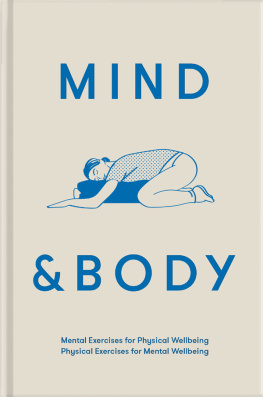
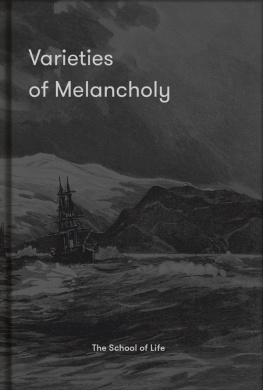

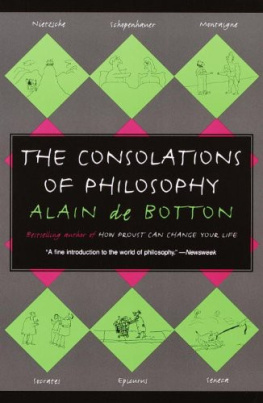
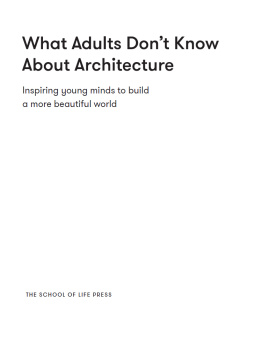

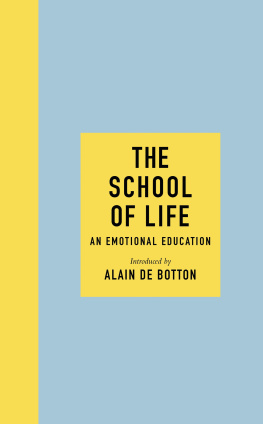

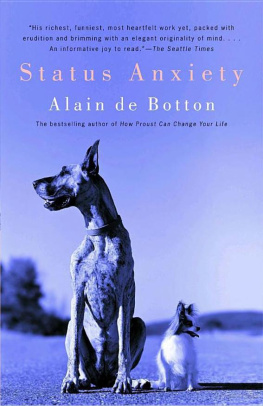
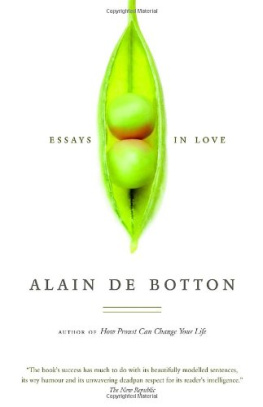

 Also by Alain de Botton On Love The Romantic Movement Kiss & Tell How Proust Can Change Your Life The Consolations of Philosophy The Art of Travel Status Anxiety
Also by Alain de Botton On Love The Romantic Movement Kiss & Tell How Proust Can Change Your Life The Consolations of Philosophy The Art of Travel Status Anxiety 
